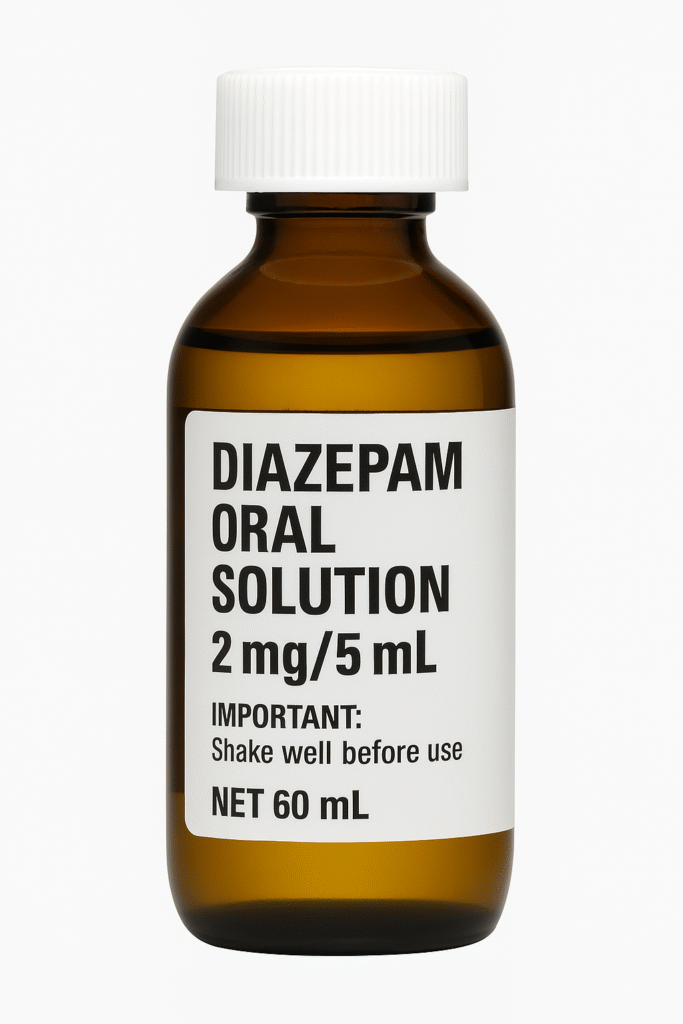💊 Diazepam Oral Liquid 2 mg/5 mL (Pediatric)
📌 1. Prescription / Indication:
Diazepam oral liquid 2 mg/5 mL is prescribed for:
- Anxiety disorders (short-term relief)
- Muscle spasms (e.g., cerebral palsy)
- Seizure disorders (adjunctive therapy)
- Acute convulsive episodes (alternative to rectal administration)
- Sedation before medical/dental procedures (pre-medication)
✅ Specifically formulated for pediatric patients or individuals with difficulty swallowing tablets.
📄 2. Description:
- Form: Oral liquid (solution or suspension)
- Strength: 2 mg of diazepam per 5 mL
- Route: Oral
- Prescription: Required (Schedule H / Schedule IV controlled drug)
🔬 3. Nature / Pharmacological Class:
- Class: Benzodiazepine
- Type: Anxiolytic, anticonvulsant, muscle relaxant, sedative
- Mechanism: Potentiates GABA neurotransmission → calming, muscle-relaxing, anticonvulsant effects
🌟 4. Advantages:
- Easy to administer in children or elderly
- Precise dose adjustment possible
- Useful for acute agitation or muscle spasm episodes
- Effective as adjunctive treatment for seizures
📦 5. Common Packaging:
| Container Type | Volume |
|---|---|
| Amber glass or plastic bottle | 60 mL, 100 mL, or 200 mL |
| With calibrated measuring cap/syringe |
🧊 6. Storage Guidelines:
- Store below 25°C
- Protect from light and moisture
- Shake well before use (if suspension)
- Keep bottle tightly closed
- Keep out of reach of children
👩⚕️ 7. Patient Advice:
- Use measuring device (not household spoon)
- Follow dosage exactly as prescribed
- May cause:
- Drowsiness
- Dizziness
- Confusion (especially in the elderly)
- Avoid alcohol or other CNS depressants
- Do not stop abruptly—risk of withdrawal symptoms or seizures
- Report any behavioral changes or paradoxical excitement in children
🎯 8. Purpose / Therapeutic Use:
- Short-term anxiety management
- Adjunct in seizure disorders
- Relief of muscle spasticity
- Preoperative sedation in children
- Emergency alternative for status epilepticus (when IV/rectal is unavailable)
⚠️ 9. Warnings / Precautions:
- Use cautiously in:
- Liver or kidney impairment
- Respiratory conditions (e.g., asthma, sleep apnea)
- History of drug dependence
- Long-term use can lead to:
- Tolerance
- Dependence
- Withdrawal symptoms
s

